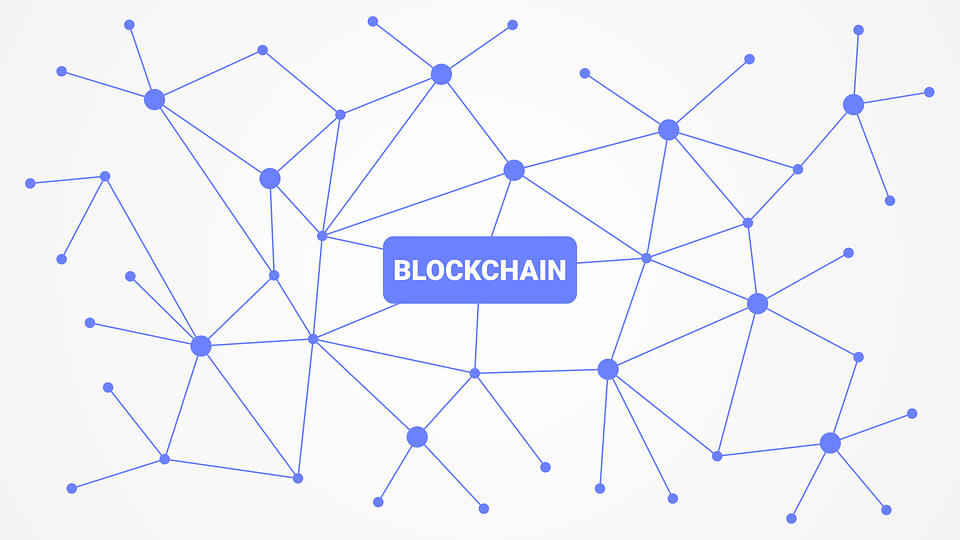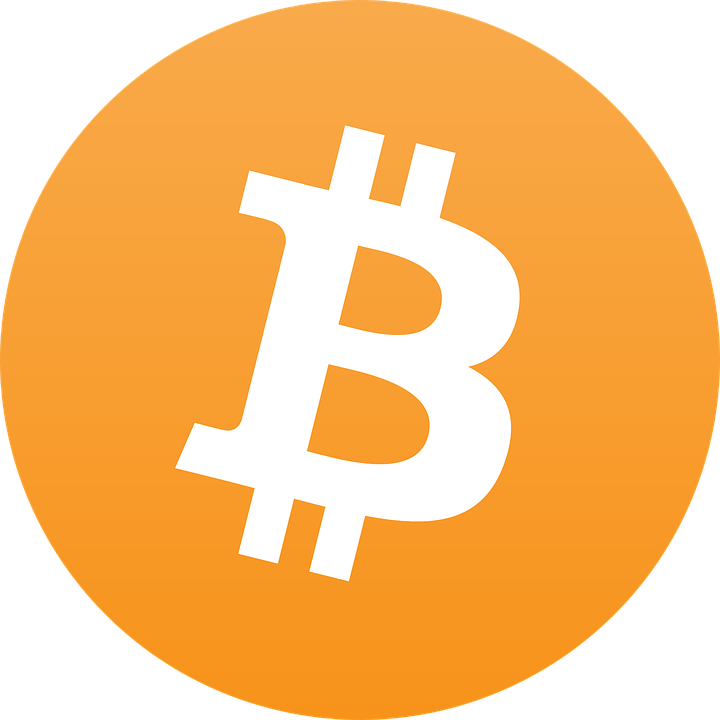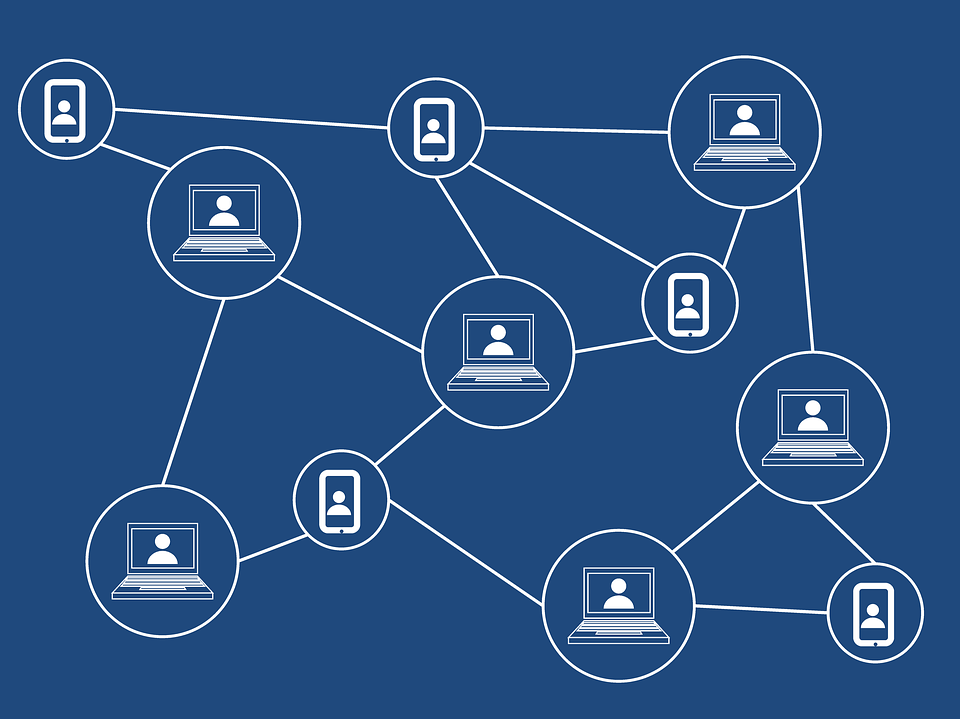 Clarence Soh Executive Director, CryptoGrinders Pte LtdThe rise of blockchain got the internet flooded with cryptography 101 and how it will affect the future. We wanted to know the high and lows of this distributed ledger technology, but not just from another article so we spoke to Clarence Soh, Executive Director at CryptoGrinders - that has around 32,000 combined followers from all its social media channels.
Clarence Soh Executive Director, CryptoGrinders Pte LtdThe rise of blockchain got the internet flooded with cryptography 101 and how it will affect the future. We wanted to know the high and lows of this distributed ledger technology, but not just from another article so we spoke to Clarence Soh, Executive Director at CryptoGrinders - that has around 32,000 combined followers from all its social media channels.
Clarence has over 30 years of experience in the tech industry under his belt - from being a Principal Consultant for a branded entertainment company to being a Global Webmaster for Mini Melts to starting his own company.
Here, you will find insight on everything under Blockchain’s sun from the man who has watched the rise and rise of this platform.
Progression: What is Blockchain?
Clarence: Blockchain is a distributed ledger of transactions. Just like how it is common practice to backup a computer, information on blockchain is backed-up and maintained by every node in the network.
 The reason for it being called ‘blockchain’ is that information is uploaded in ‘blocks’; these are packets of information structured in accordance to the rules of blockchain, and these blocks are attached to each other to form a ‘chain’.
The reason for it being called ‘blockchain’ is that information is uploaded in ‘blocks’; these are packets of information structured in accordance to the rules of blockchain, and these blocks are attached to each other to form a ‘chain’.
Each block consists of these transactions and a reference to the previous block, which, that there is no chance of a ‘fake’ block being attached; it would not be able to link to the previously existing block. It is also virtually impossible to change data once it has been uploaded, as that would require a person to have enough computing power to change all the data on every node in network within minutes, with the exact time being determined by the respective blockchain’s verification time.
As such, the blockchain has been considered immutable (unable to be changed), has no single point of failure and is ‘trustless’ (does not require users to trust each other).
Progression: How about Bitcoin and Ethereum?
Clarence: Bitcoin was the pioneer cryptocurrency, developed back in 2009 by Satoshi Nakamoto. The true identity of the person or persons is still unknown.
Developed to be a digital currency, it was the first to solve the problem of ‘double spending’, where a user would be able to spend coins they did not own. To do so, Satoshi introduced Proof of Work - a block was formed by using computational power to discover it, and the finder of the block would be rewarded with some Bitcoin as a reward for his work.
Today, it is the cryptocurrency with the largest market cap, and is referred to as ‘digital gold’.
Ethereum on the other hand, was developed in 2014 by Vitalik Buterin, who was previously the co-founder of Bitcoin Magazine. He recognised that Bitcoin was an amazing product, but was limited to being a currency.
His solution was to implement a scripting language for the blockchain, which made Ethereum the first smart contract platform. Unlike Bitcoin, Ethereum is not a currency. It is a platform that developers can use to develop decentralised applications (DApps).
Smart contracts are essentially ‘if-then’ orders that are coded into the application, and are automatically executed when the conditions have been met. A simple example would be scheduling a post on Facebook. If the post is set to go off at 9:00 H on the 21st of March 2018, the order to release the post will be executed on that date and time.
Ethereum opened up the idea that the blockchain could be used for much more than simple transactions, and is the largest smart contract platform at the time of writing.
Progression: What technology does Bitcoin use?
Clarence:
Bitcoin runs on blockchain technology. It is a publicly accessible shared ledger, which means that every participant has a copy of the ledger. This ledger holds a record of all transactions ever made. This makes altering the information almost impossible: since the ledger is distributed, there is no single point of failure.
Hacking into one ledger would be meaningless as the data would be different from the other copies, and hence rejected.
Transactions: A record of Bitcoin being transferred from account to account. This makes sure that a person is not able to spend what they do not own.
Reference to Previous Block: This ensures that the latest block is being built on the chain, and not a ‘fake’ block randomly created.
Signature: This allows the protocol to determine who to reward for validating the transactions.
Each block is added through a process known as ‘Proof of Work’.
It is called Proof of Work because each block needs to be ‘discovered’ by a miner through brute force calculation.In the Bitcoin protocol, the next block found has to meet certain requirements. The only way to discover a new block is by taking the block of data (transactions, reference to previous block, signature), and adding a random number to it (nonce). This changes the pattern of the encrypted data, and requires brute force computing to derive an answer; there is no shortcut.
Hence, when a block is discovered, the miner is proving that he put in the work, and that is why he is rewarded.
Through this process, new blocks of data are added to the existing ‘chain’, and every node in the network is updated.
Progression: How and when did Bitcoin gain so much momentum?
Clarence: Bitcoin started gaining some traction in 2016, and exploded up to an all-time high in 2017 (20,000 USD). While Bitcoin has been  around for years before that, it was usually met with scepticism for several reasons.
around for years before that, it was usually met with scepticism for several reasons.
Let’s talk about Digital Money - At that point in time, the idea of digital money not backed by any government was revolutionary and hard to believe. Why would anyone want to pay for online money that had little or no practical use? At that time, virtual coins were not common, and the concept was unfamiliar and seemed suspicious. How was the value derived? How could anyone be assured that they would be able to sell these coins? Without any clear governing body, how could you determine that you were not being cheated? Without probing further, many dismissed it as just another online scam.
There were also negative views on Bitcoin as being a currency for illegal dealings. With the existence of the dark web, many assumed that the digital currency was untraceable (false) and was used to purchase things on the black market that were illegal. This further discredited the reputation of Bitcoin.
Only in recent times, when the price of Bitcoin began increasing exponentially, did people begin to pay closer attention to it. As more and more people read the whitepaper, it became clear that Bitcoin was not just a shady coin, but a project that had major implications for how transactions could be performed.
As the network grew larger and larger, blockchain grew increasingly secure, and that leads us to what it is today.
Progression: What is a Bitcoin wallet and how do I use it?
Clarence:
A Bitcoin wallet is like a safe in the house, and the private key is the password to the safe. Only you have the password to your safe. If the password is forgotten or misplaced, the funds inside are irretrievable. This is both empowering and frightening; the only way that an individual can truly own something is by being responsible for it.
A public address in Bitcoin is like a home address; this is where people can send payments to you. Knowing your public address does not mean they have access to your funds. (To create a wallet and start using it, follow CryptoGrinder’s guide here)
Progression: What are the advantages or disadvantages of Bitcoin?
Clarence: The advantages are it’s safe, immutable, decentralized and innovative.
Safe: No one can ‘steal’ funds from a cautious individual. As long as the private key remains secret, every and all transactions have to be approved by the individual who owns the funds, and there is no way for someone to just enter a wallet and empty it.
Immutable: Transactions are permanently recorded, and cannot be tampered with. Individuals on the network do not have to trust each other, as the records in the blockchain are always true.
Decentralized “ Without a governing body, there is no central authority who takes care of the main server. This means that there is no single point of failure, and users never experience a period where the network goes down due to an attack or maintenance. As long as the network has active nodes, the blockchain will remain active and operational.
Innovation: Every day, more and more use-cases are being discovered and planned for, which push the boundaries of what can be done today. With the blockchain as the backbone, people have begun looking for ways to improve daily life and overcome the current limitations of the blockchain. As more and more attention is placed on blockchain technology, it will rapidly evolve to fit every use-case it can.
Its disadvantages? The transaction speed and its volatile market, definitely.
Transaction Speed: Due to the exponential increase in the number of transactions, the network is beginning to take an increasingly long time to process the transactions. Each block can only hold a finite number of transactions, which means that if the demand exceeds the supply, users will have to wait their turn.
Volatile Market: With so many people speculating on the prices of cryptocurrencies, there are sharp spikes in the prices. A store of value that is unstable is not ideal, as its worth the next day is never known. Until the market stabilises, cryptocurrency remains a relatively weak store of value.
Progression: How does Blockchain affect us?
Clarence:
The blockchain is not just a decentralized ledger for monetary transactions, it can be used in everyday life, as it can store information about virtually anything.
The idea of ‘tokenizing’ means that almost anything can be broken down into tokens and given a value. This has major implications in every industry.
Blockchain in Education
Authenticity
Certificates issued via blockchain are tamper-proof. Companies would not be required to manually check that the degree is really from the school, but can be rest assured in the immutability of blockchain.
School Server Improvement
Rather than having a central server that can occasionally be compromised, blockchain technology ensures that essential learning materials are always available to the students and faculty members alike.
 Blockchain in Government
Blockchain in Government
Transparency
Blockchain is publicly accessible, as anyone on the network has access to the ledger. By placing governance on the blockchain, matters are transparent, and corruption can be reduced.
It can also be used on issues such as voting. The immutability and stability of the blockchain ensures that the votes are always accurate, and does not require trust in the people who are counting the votes: the results are clear for anyone to see on the ledger as it happens.
Blockchain in Entertainment
Reduced Middleman Fees
Applications such as Netflix and Spotify currently dominate the market. For users, a small monthly fee gives access to hundreds of thousands of music and videos. However, a large majority of the fees are taken by the company, with artists getting a fraction of the earnings. In the long run, artists are not incentivised to produce quality work, as they are undercompensated for their efforts.
Using blockchain technology, artists can be directly paid a fair wage for their work. Platforms such as Steemit allow their writers to be tipped with Steem tokens, which can be converted out for money on exchanges. Steemit itself does not take any of the earnings the writer receives. This encourages artists to continually churn out quality material, to everyone’s benefit.
Blockchain in Medical
Privacy
Medical institutions are privy to a vast amount of patient data, which they are legally bound from revealing. However, this does not mean that a leak might not occur. With the use of blockchain technology, patients’ data is kept private unless they authorise it.
Borderless Data
Data from one hospital is not always shared with other hospitals. In the case of an emergency, there is a time-urgent need for a doctor to know all medical data about the patient, and it might be impractical to contact all the hospitals the patient has gone to before to get a full record. With blockchain technology, all patient data can be extracted and shown to the doctor within minutes, rather than having to contact multiple databases for information.
These are just some simple examples of how blockchain technology has the ability to disrupt and revolutionise how industries are run today.

